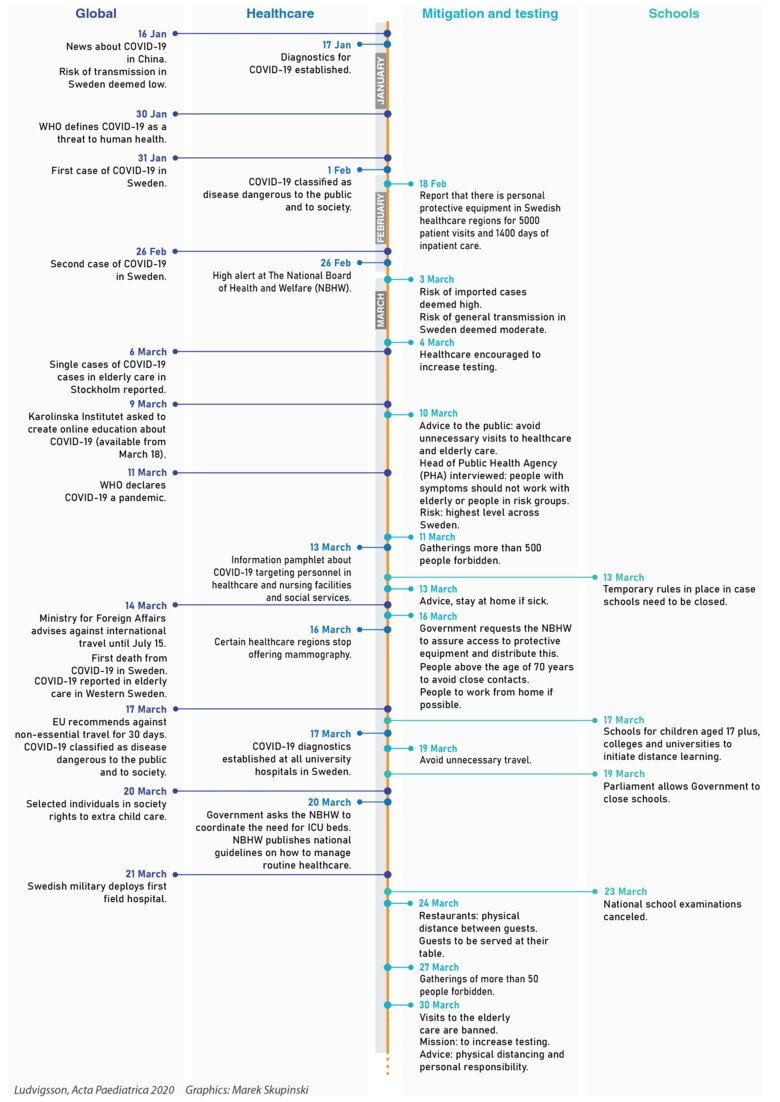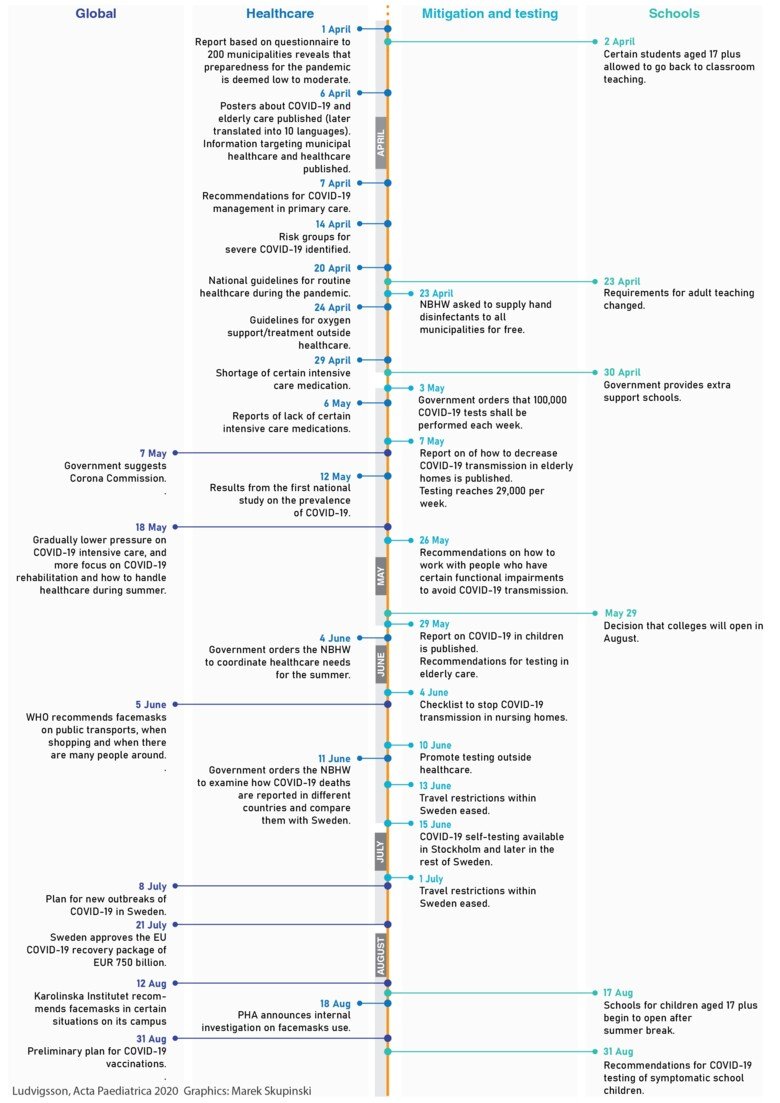The first eight months of Sweden’s COVID-19 strategy

Sweden chose a different pandemic strategy than its peer nations. This included the timing of pandemic-related actions, how parts of the healthcare system reacted to the pandemic, the legal framework for the relationship between the Government and other actors and actions taken with regard to schools. In a paper published in Acta Paediatrica, Professor Jonas F Ludvigsson presents a detailed timeline on how Sweden tackled COVID-19 during the eight months up to 1 September, 2020.
The World Health Organization (WHO) classified COVID-19 as a threat to human health on 30 January 2020 and upgraded it to a pandemic on 11 March. Since then, many countries have taken extensive steps to stop the spread of the disease, but Sweden adopted a more measured approach, without the national lockdowns instigated by many of its European neighbours.
Through contacting Swedish national government agencies by email, and examining web pages and reports, Jonas F Ludvigsson, paediatrician at Örebro University Hospital, and professor at the Department of Medical Epidemiology and Biostatistics, Karolinska Institutet, reviewed the Swedish pandemic response.
“The main actors of the Swedish response were the Public Health Agency, the National Board of Health and Welfare, the Civil Contingencies Agency and the Government. County councils and regions implemented policies, in conjunction with the Department of Education and county administrative boards”, says Ludvigsson.
The Swedish Constitution
Together with the Government, these actors, especially the Public Health Agency and the National Board of Health and Welfare, formed the Swedish response. In his review, Ludvigsson also points out the importance of the Swedish Constitution that stipulates that Government Ministers have no power to override the actions of independent agencies. It also describes the power sharing between the Government and municipalities, the latter being responsible for important parts of healthcare.
Sweden’s response was less invasive than many other countries, with no general lock-down. It focused on mitigation: slowing, but not stopping, the pandemic.
Ludvigsson continues: “Physical distancing was recommended in public spaces, but mandatory in bars, restaurants and at events. Visits to nursing facilities were banned. Kindergartens and schools for children up to 16 stayed open, but closed for older children for three months. There were no enforced quarantines for infected households or geographical regions and facemasks were not recommended outside healthcare.”
The main focus of the paper is a timeline of the key actions taken in Sweden during the Pandemic, which can be downloaded separately here as a pdf file. The paper also suggests outcome definitions for register-based COVID-19 research.
The study did not receive any external funding.
Publication
JF Ludvigsson. The first eight months of Sweden’s COVID-19 strategy and the key actions and actors that were involved. Acta Paediatrica 2020.
Timeline of key actions



